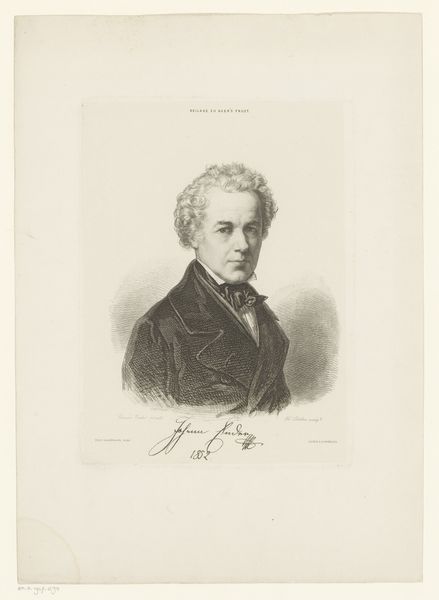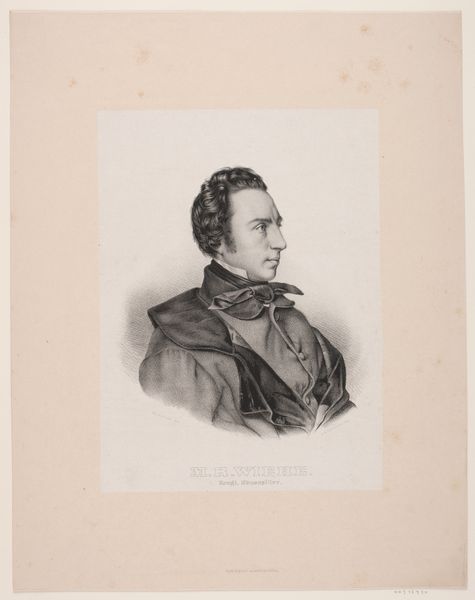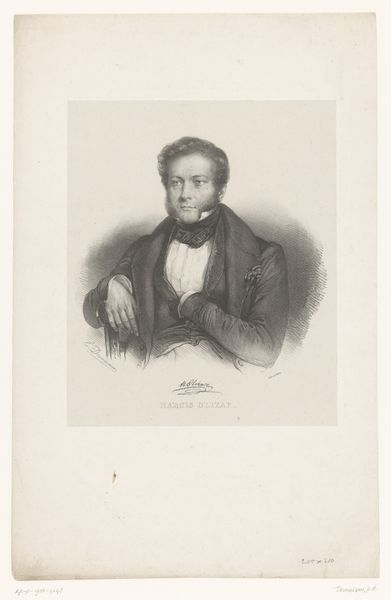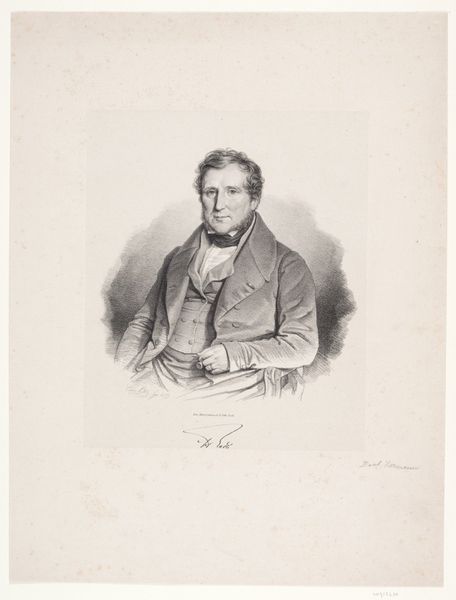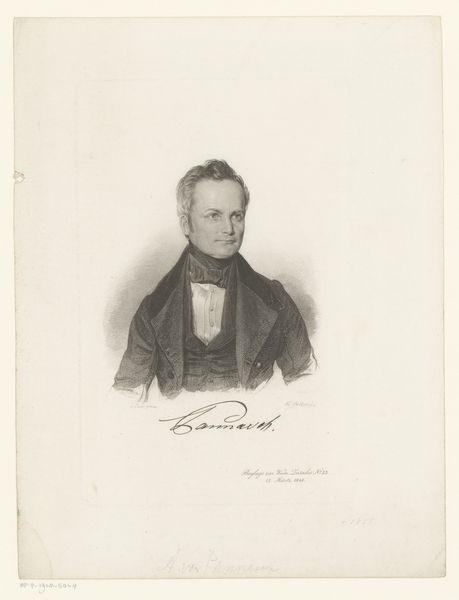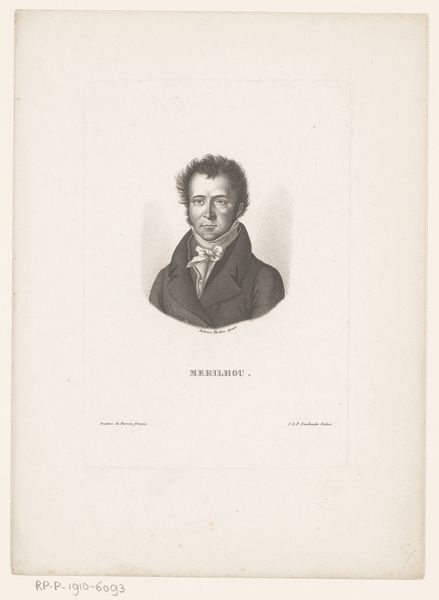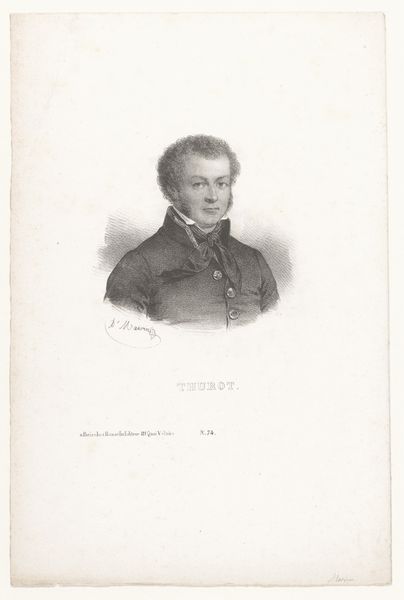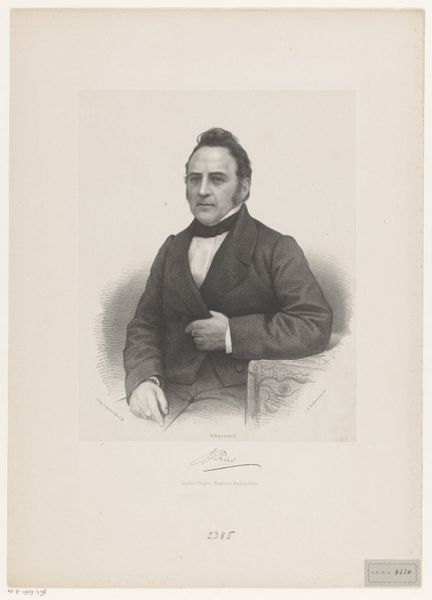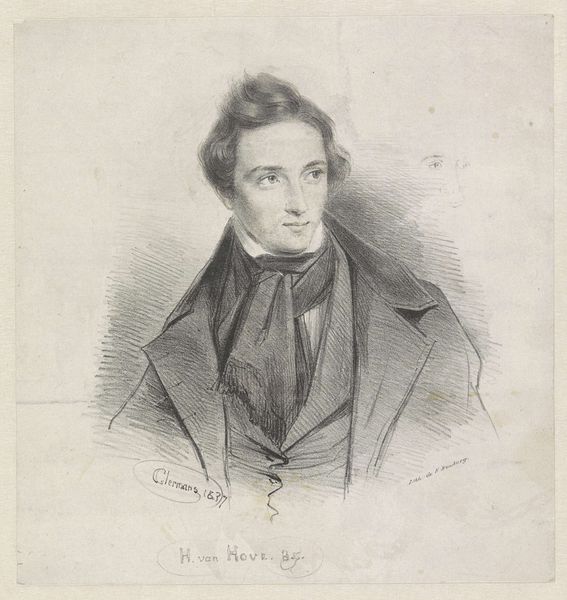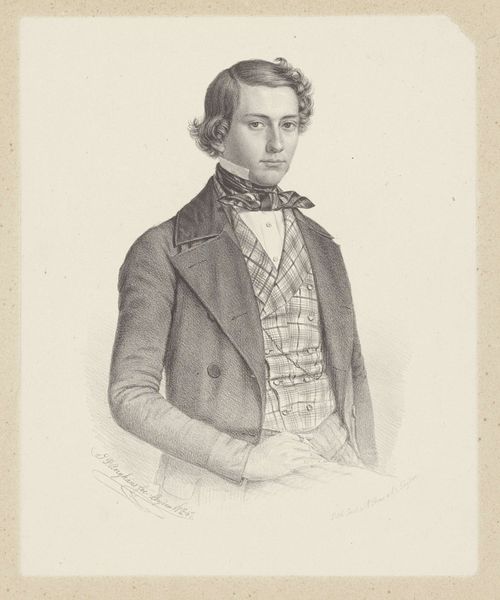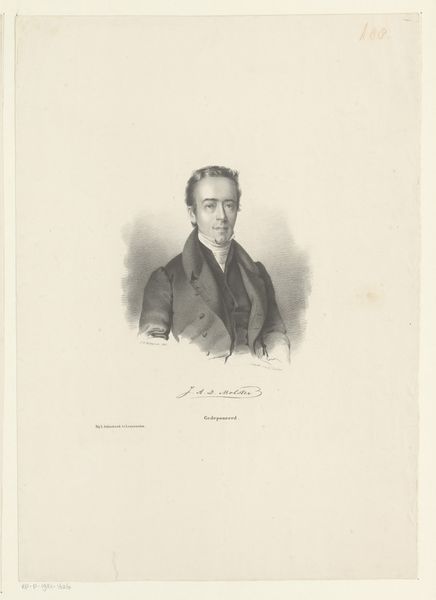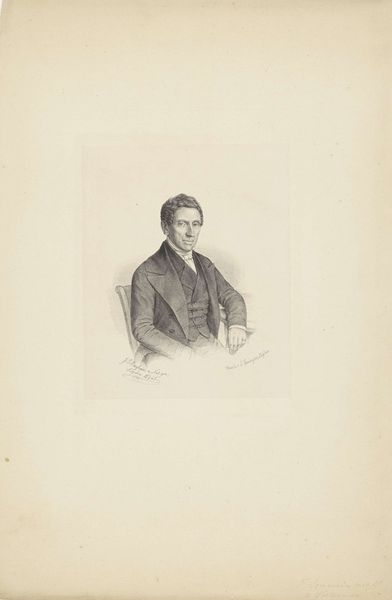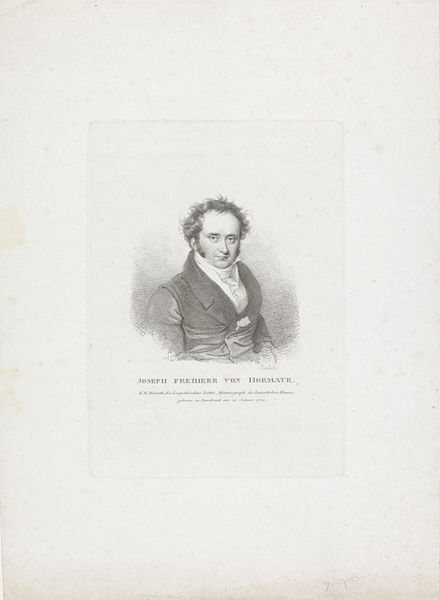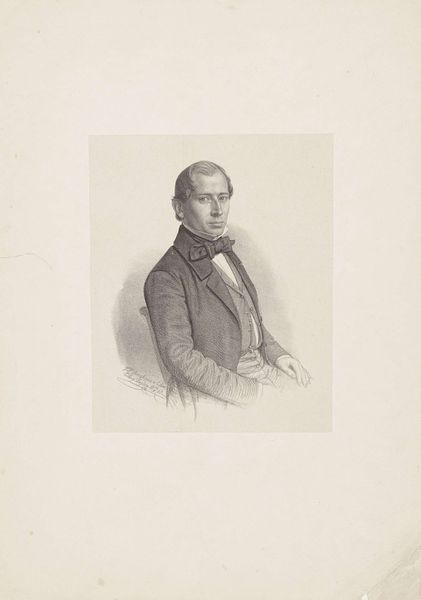
drawing, print, pencil
#
portrait
#
drawing
# print
#
pencil sketch
#
pencil drawing
#
romanticism
#
pencil
#
pencil work
#
watercolour illustration
#
realism
Dimensions: height 547 mm, width 357 mm
Copyright: Rijks Museum: Open Domain
This is Antoine Maurin’s portrait of Louis-Auguste Papavoine, made with lithography. This printing technique involves drawing with a greasy crayon on a flat stone or metal plate, which is then treated to accept ink only where the crayon has marked it. Lithography emerged as a relatively inexpensive method of producing images, fueled by the Industrial Revolution's demand for mass communication. Its reliance on skilled draftsmanship, combined with the mechanical process of printing, reflects a tension between artistic expression and industrial production. The marks you see here evidence the artist’s hand but also his knowledge of mechanical reproduction. In this portrait, lithography captures the nuances of Papavoine's features and attire. The texture of his coat, the subtle shading of his face, and the overall composition convey both the sitter’s social standing and the artist’s skill. Consider how printmaking democratized image production. With its blend of handcraft and technology, Maurin’s portrait challenges the traditional hierarchy between art and craft, inviting us to appreciate both the skill of the artist and the industrial processes that enabled its creation.
Comments
No comments
Be the first to comment and join the conversation on the ultimate creative platform.
